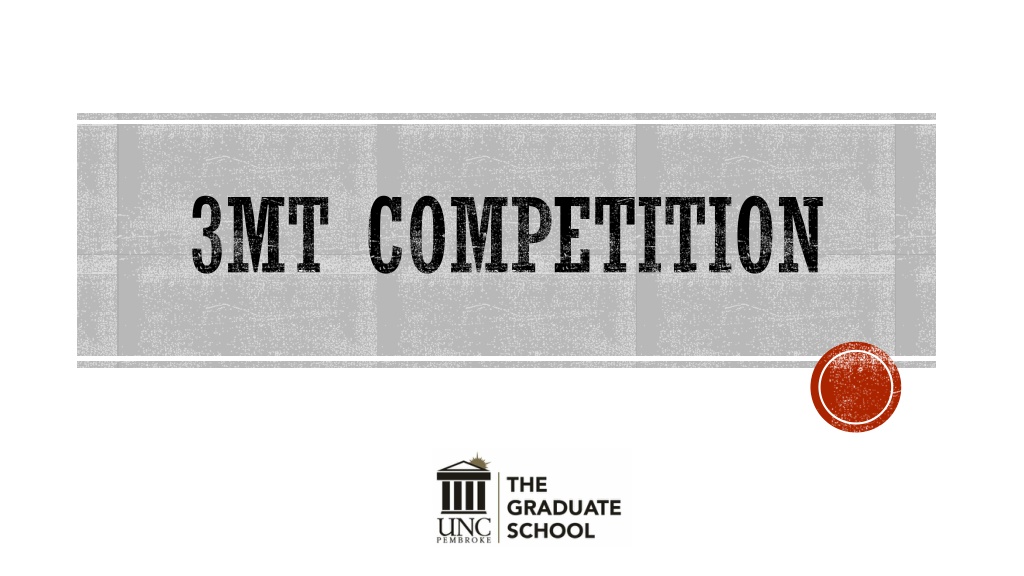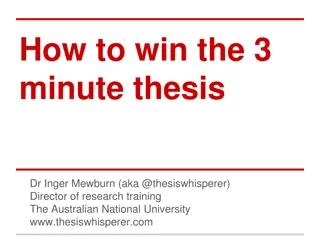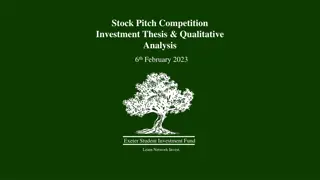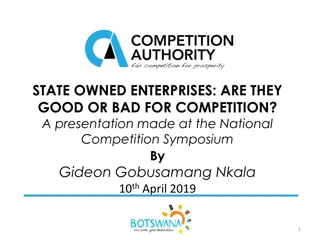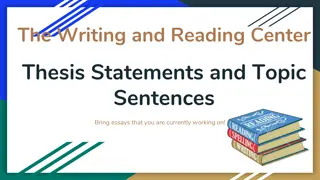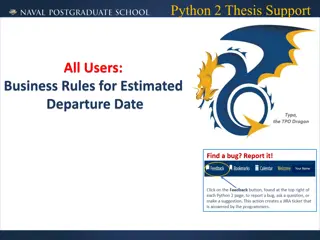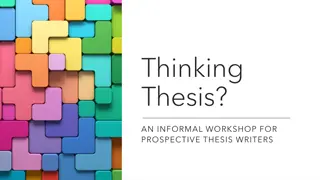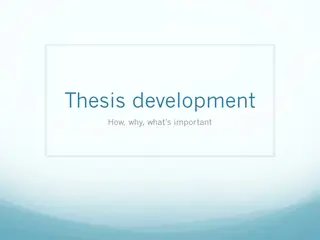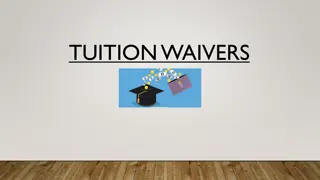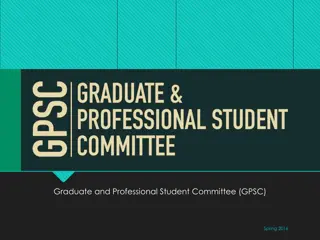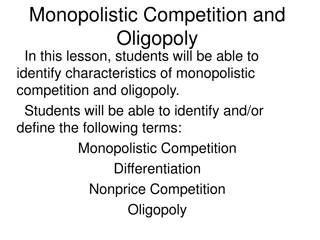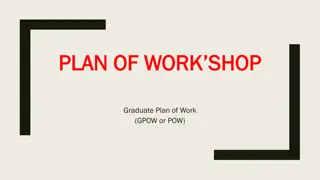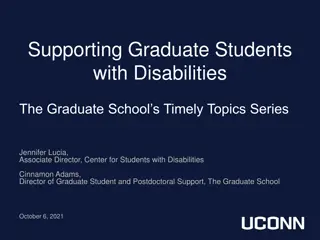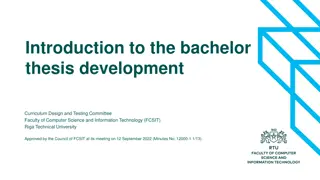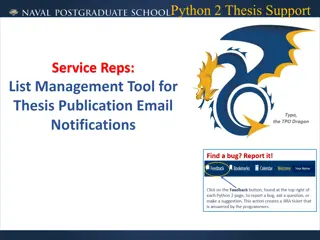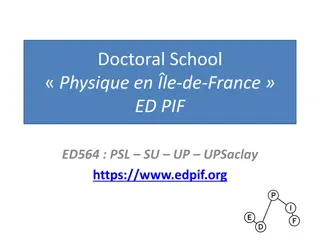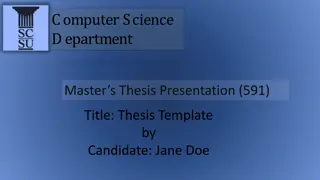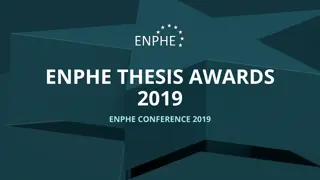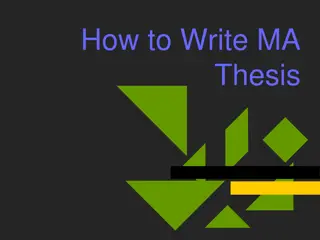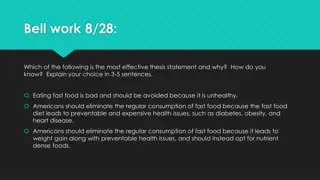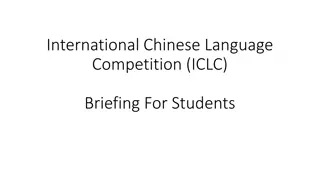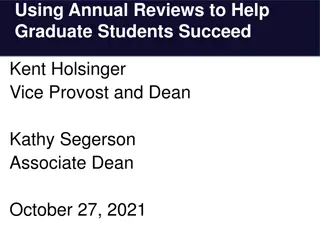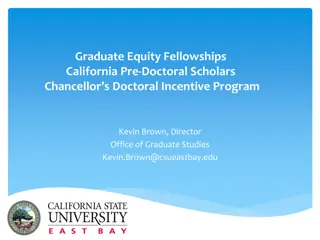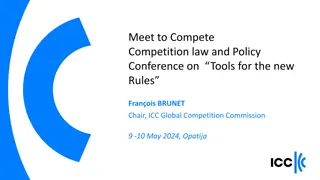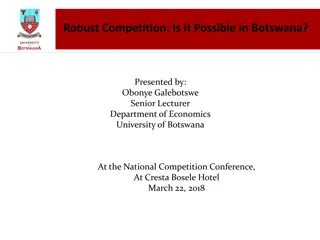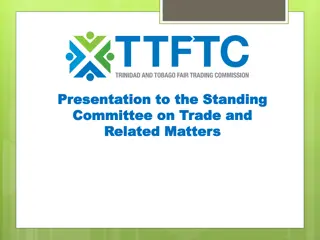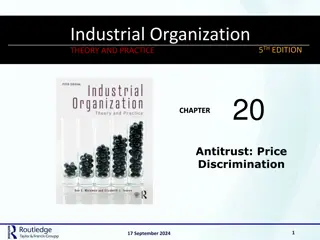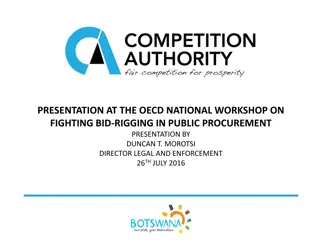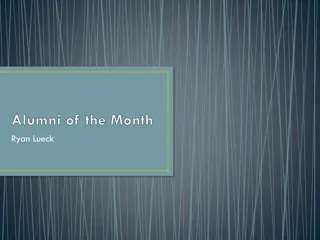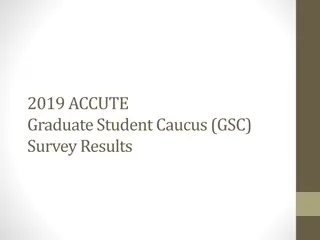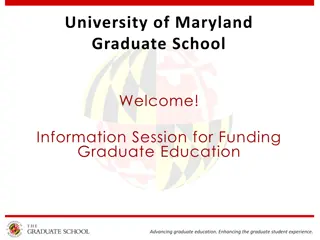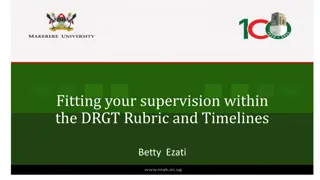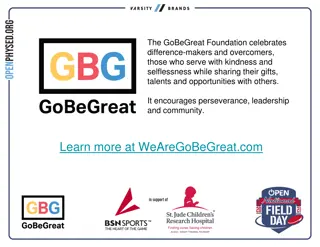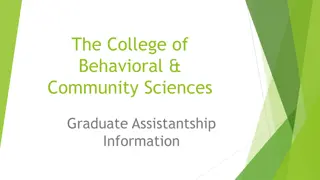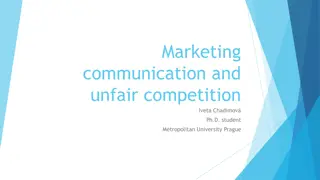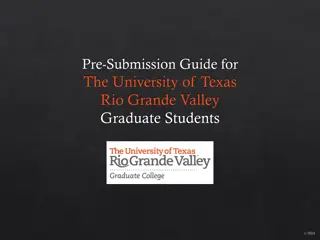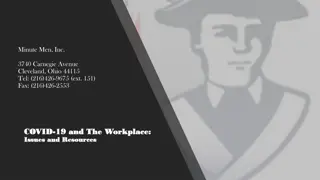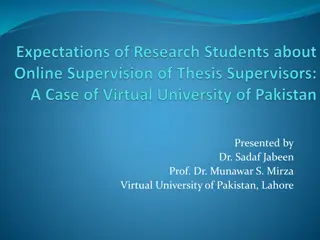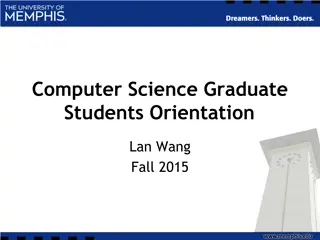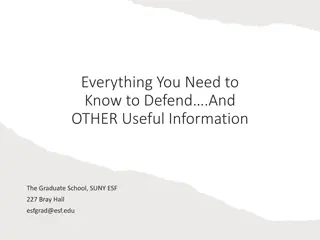The Three Minute Thesis Competition: Communication Challenge for Graduate Students
The Three Minute Thesis (3MT) competition challenges graduate students to present their research in a compelling three-minute speech to a non-specialist audience. Originating in 2008 at the University of Queensland, this global event has grown to over 170 universities across 17 countries. Presentations are judged based on comprehension, content, engagement, and communication, with strict rules including a single static PowerPoint slide and spoken-word presentations only. Criteria for scoring encompass research background, audience engagement, clarity of results, communication skills, and more.
- Thesis competition
- Research communication
- Graduate students
- Presentation challenge
- Communication skills
Uploaded on Sep 26, 2024 | 0 Views
Download Presentation

Please find below an Image/Link to download the presentation.
The content on the website is provided AS IS for your information and personal use only. It may not be sold, licensed, or shared on other websites without obtaining consent from the author. Download presentation by click this link. If you encounter any issues during the download, it is possible that the publisher has removed the file from their server.
E N D
Presentation Transcript
The Three Minute Thesis (3MT) is a research communication competition that challenges graduate students to present their research in a compelling, three-minute speech, relaying the significance and relevance to a non-specialist audience. The time limitations force the presenter to consolidate their work and ideas. The first 3MT was held at the University of Queensland in 2008 with 160 graduate students competing. Today, the 3MT competition has grown to over 170 universities across more than 17 countries worldwide. UNCP is excited to host its first annual 3MT event in April 2017.
Each presentation will be judged on comprehension, content, engagement and communication. 3MT RULES Each presentation is limited to 3 minutes maximum and competitors exceeding 3 minutes will be disqualified. Presentations are considered to have commenced when a presenter starts their presentation through movement or speech. A presenter is allowed to have a single static PowerPoint slide (no slide transitions, animations or 'movement' of any type are allowed), no additional electronic media (e.g., sound and video files) or props (e.g., costumes, musical instruments, laboratory equipment) are permitted. All presentations are required to be spoken word (e.g., no poems, raps or songs) and commence from the stage.
Comprehension & Content Score (Out of 10) Engagement & Communication Score (Out of 10) EXAMPLE OF 3MT SCORING CRITERIA 1. Did the presentation provide an understanding of the background to the research question being addressed and its significance? 1. Did the oration make the audience want to know more? 2. Was the presenter careful not to trivialize or generalize their research? 2. Did the presentation clearly describe the key results of the research including conclusions and outcomes? 3. Did the presenter convey enthusiasm for their research? 3. Did the presentation follow a clear and logical sequence? 4. Did the presenter capture and maintain their audience's attention? 4. Was the thesis topic, key results and research significance and outcomes communicated in language appropriate to a non-specialist audience? 5. Did the speaker have sufficient stage presence, eye contact and vocal range; maintain a steady pace, and have a confident stance? 5. Did the speaker avoid scientific jargon, explain terminology and provide adequate background information to illustrate points? 6. Did the PowerPoint slide enhance the presentation - was it clear, legible, and concise? 6. Did the presenter spend adequate time on each element of their presentation? 7. Did the speaker avoid scientific jargon, explain terminology and provide adequate background information to illustrate points? 8. Did the speaker have sufficient stage presence, eye contact and vocal range; maintain a steady pace, and have a confident stance?
3MT EXAMPLES
